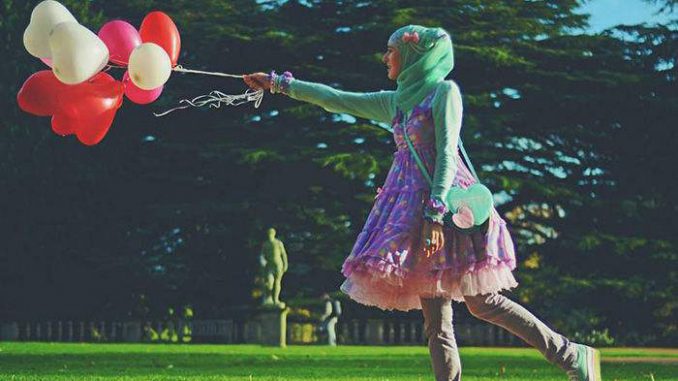
The Lolita Lolita dress culture originating in Harajuku, Japan, has now floated across the ocean and has developed a new fashion branch: Muslim Lolita. The bowknot of the girlish feelings, the lace of the femininity, or fresh and sweet or retro personality coloring and printing, the Muslim girls who are restricted by doctrine can finally wear belong to their own fashion.
Lolita fashion which has been and still is a niche fashion clique around Harajuku, where girls dress up inspired from the Western Victorian or Rococo one-piece dresses with heavy frills, pastel colors, which reminds us as if like a princess or innocent pretty dolls. This Western fashion culture has developed within Japanese popular culture, which started out as Japanese girls being obsessed into the cutesy world of purity and innocence.

Lolita fashion culture used to be a subcultural genre of young girls since the late 1970s wearing frilly one-piece dresses, to emphasize their femininity and innocence, as opposed from sexually revealing females and female empowerment, which was more popular back then. But the Lolita culture became more public with the popularity of the movie, “Shimotsuma Monogatari,” starring Kyoko Fukada and Anna Tsuchiya in 2004. The comedic story of unlikely friendship between a Lolita girl and delinquent biker girl with cute and pop color touch visuals became a hit. The starring actress Kyoko Fukada herself was also a Lolita girl, that she herself was also the fan of the brand BABY THE STAR SHINES BRIGHT, which also became more recognized from the movie as well.

Only a few “Blue Letter” fashion magazines featured Lolita fashions with Street Snaps from Harajuku, and KERA was and still is the main magazine that still features underground fashion of Harajuku like the punk, Gothic, and Lolita girls. Misako Aoki, one of the readers-models from KERA, became a charismatic figure for Lolita fashion fans through Street Snaps and appearances on KERA, and she is now currently is the head of the “Japan Lolita Association (Nihon Lolita Kyoukai),” since 2013, and has been working to spread the Lolita cultures to audiences outside of Tokyo.

Currently, there are many cliques of Lolita fashion, from “Sweet Lolita,” “Gothic Lolita” and “Princess Lolita,” so many others, to satisfy each individual taste. From this past 10 years, kawaii culture has spread more overseas with the efforts of the people like Misako Aoki, which Lolita fashion has also traveled across the seas as opposite import to the Western countries. But most recently, there has been internet sensation with a Muslim girl, wearing a Lolita outfit with the pastel-colored Hijab, and long tight pants under the skirt, calling it “The Hijabi Lolita.” And it’s, very kawaii! Her respect towards both of her religious belief and the Lolita culture is embedded together perfectly into her own style as “Muslim Lolita” or “Musu-Rori” in abbreviation. Some say that the Lolita outfit and the female Muslim outfits are somewhat compatible since both of the fashion cultures don’t reveal their skin. But, the “Musu-Rori” is possible in just some of the Western countries that allow freedom of fashion, and within their range of freedom with their beliefs, they have coped with their own way of enjoying the Lolita.

Working it out within their possibility to create their new and innovative culture is amazing, and even the Japanese Netizens found the “Muslim Lolita” to be “kawaii” and very intrigued as a new fashion innovation. Not only that it is nice to see how the Japanese culture is accepted overseas, but it’s also nice to discover how it is interpreted and transformed in the variety of ways according to different cultures. I hope to see more of cross-pop culture from different parts of the world!

Leave a Reply